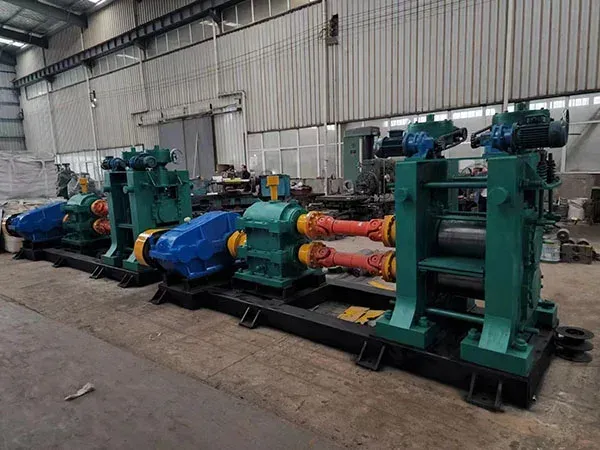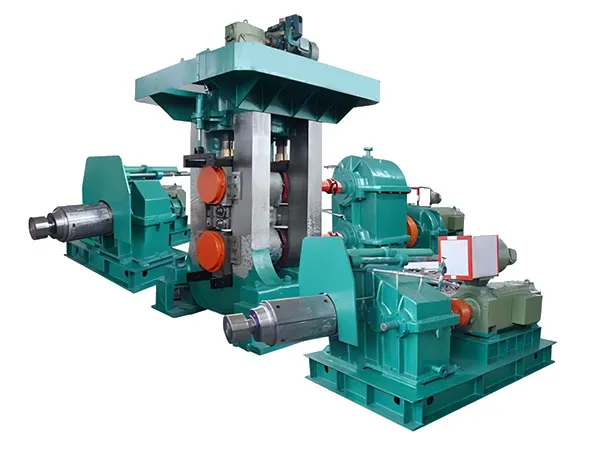To extend the service life of a rolling mill, it's essential to implement a combination of proactive maintenance, operational best practices, and material management. This multi-faceted approach helps reduce wear and tear, prevent breakdowns, and maintain the mill's performance over time.

Selecting the Right Lubricant: Use lubricants specifically formulated for the high temperatures, pressures, and contaminants present in rolling mill operations. This often includes specialized greases for bearings and gear oils for gearboxes.
Optimal Lubrication Intervals: Adhere to manufacturer recommendations for lubrication intervals. Too little lubrication leads to wear, while too much can cause overheating and seal damage.
Effective Lubrication Systems: Implement automated lubrication systems to ensure consistent and precise application of lubricants to critical components like bearings, chocks, and screwdowns.
Filtration: Ensure all lubricants are properly filtered to remove contaminants that can cause abrasive wear.
Monitoring Lubricant Condition: Regularly analyze lubricant samples for signs of degradation, water contamination, or metal particles, which can indicate impending component failure.
Preventive Maintenance Schedule: Establish and strictly follow a comprehensive preventive maintenance (PM) schedule that includes inspections, cleaning, adjustments, and replacement of wear parts.
Predictive Maintenance (PdM): Utilize techniques like vibration analysis, thermography (infrared imaging), and oil analysis to predict potential failures before they occur, allowing for planned interventions.
Alignment: Regularly check and adjust the alignment of rolls, bearings, and drive components. Misalignment causes excessive loads and premature wear.
Tightening and Torque Checks: Ensure all fasteners are tightened to the correct torque specifications to prevent loosening and subsequent damage.
Cleaning: Keep the mill area clean. Accumulation of scale, dust, and debris can contaminate lubricants and cause damage to moving parts.
Optimal Roll Material: Select rolls made from materials best suited for the specific rolling process, considering factors like material hardness, wear resistance, and resistance to thermal fatigue.
Proper Roll Cooling: Implement efficient roll cooling systems using water or other coolants to dissipate heat and prevent thermal cracking or spalling of rolls.
Grinding and Dressing: Regularly grind and dress rolls to maintain their correct profile and surface finish. This removes wear, cracks, and surface imperfections.
Roll Changing Schedule: Adhere to a planned roll changing schedule to avoid over-utilization of rolls, which can lead to catastrophic failure.
Roll Storage: Store spare rolls properly to prevent corrosion, damage, and surface degradation.

Controlled Rolling Parameters: Operate the mill within its design parameters for speed, reduction, tension, and temperature. Exceeding these limits can overstress components.
Smooth Start-up and Shut-down: Implement controlled start-up and shut-down procedures to minimize shock loads on the system.
Load Balancing: Ensure loads are evenly distributed across the rolls and bearings to prevent localized stress concentrations.
Operator Training: Properly train operators on best practices, including understanding machine limits, recognizing abnormal conditions, and performing basic checks.
Minimizing Impact: Reduce sudden impacts and shocks to the mill, for example, during coil loading or material entry.
High-Quality Components: Invest in high-quality bearings, gears, seals, and other critical components from reputable manufacturers.
Material Upgrades: Consider upgrading components to materials with superior wear resistance, fatigue strength, or corrosion resistance where feasible.
Advanced Technologies: Explore implementing advanced technologies such as active roll bending systems, automatic gauge control, and improved sensing for better process control and reduced wear.
Temperature Control: Maintain a stable operating temperature for hydraulic systems and lubrication systems.
Dust and Fume Extraction: Implement systems to control dust, scale, and fumes, which can contaminate lubricants and corrode components.
By diligently implementing these techniques, the service life of a rolling mill can be significantly extended, leading to reduced downtime, lower maintenance costs, and improved productivity.
A Complete Analysis of the Cold Rolling Process: From Raw Materials to High-precision Finished Coils
2025-12-15Cold Rolling Mill Working Principle Explained: A Complete Beginner’s Guide
2025-12-11Cold Rolling Mill Price Guide 2025: Key Cost Factors Every Buyer Should Know
2025-12-05Steel Bar Production Line vs Traditional Processing: Maximize Efficiency, Quality & Profitability
2025-11-24Address: Gongyi City, Zhengzhou City, Henan Province
E-mail: info@gyssljx.com
Phone: 0086 19339904886
If you have any product related questions, please feel free to call us at any time

With 30 years of professional experience, we customize efficient and energy-saving rolling mill production lines, providing you with one-stop service from design to installation and commissioning, helping you achieve steady growth in the steel industry.
Go
Top
SHENLONG Machinery · Your Rolling Equipment Expert ·